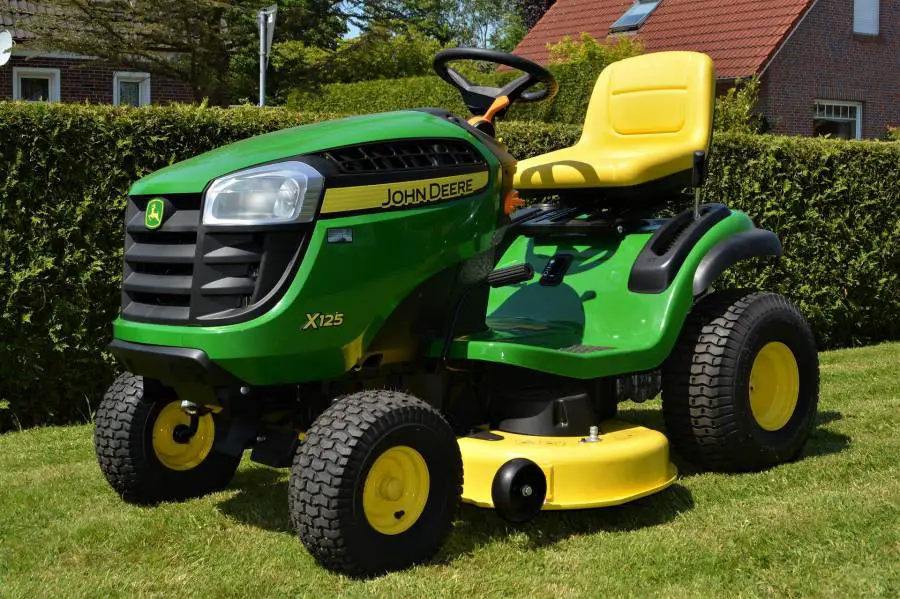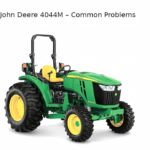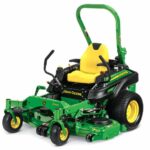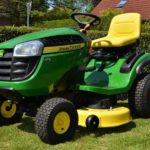Table of Contents
If you like to work on their John Deere lawn mower, you may need to know how to disengage the hydrostatic transmission.
The hydrostatic transmission allows your lawn mower to move forward and backward. It is a critical component of the lawn mower’s overall function.
Luckily, disengaging the hydrostatic transmission is a relatively straightforward process that anyone can do.

Considerations
When disengaging the hydrostatic transmission on your John Deere lawn mower, there are a few things to keep in mind.
Proper Tools
Disengaging the hydrostatic transmission on your John Deere riding lawn mower is necessary for routine maintenance.
The hydrostatic transmission allows you to change the speed and direction without stopping and starting the engine.
However, it can also be exceedingly messy if not handled correctly because it is hydraulic. That’s why it’s crucial to have the proper tools before you begin.
With the right tools in hand, you’ll be able to disengage the hydrostatic transmission on your riding lawn mower safely.
Draining The Oil
Disengaging the hydrostatic transmission on your John Deere riding mower is necessary when performing maintenance or troubleshooting issues.
Draining the oil from the hydrostatic transmission before removing it will help to prevent any damage to the surrounding components.
Here are the steps you need to take:
- Disengage the PTO.
- Place the transaxle in neutral.
- Disconnect the battery.
- Raise the mower deck to its highest position.
- Remove the fuses from the fuse box.
- Disconnect the wiring harness from the transmission.
- Remove the mower deck belt from the pulleys.
- Drain the oil from the hydrostatic transmission by removing the drain plug and catching the oil in a drain pan.
- Remove the transmission dipstick and cap to release any pressure built up in the system.
- Remove the bolts that secure the hydrostatic transmission to the mower frame and remove the transmission itself. Be sure to have a helper on hand to support the weight of the transmission as you remove it. With these steps, you’ll be able to drain the oil safely.
Reinstalling The Transmission
When reinstalling the hydrostatic transmission, line up the bolts with the holes in the housing.
If the transmission is not aligned correctly, it could cause damage to the lawn mower.
Adding Oil
Finally, add oil to the hydrostatic transmission before operating the lawn mower.
John Deere recommends using their Hydrostatic Transmission Fluid, but you can also use standard motor oil.
With these simple instructions, you can easily reset your John Deere lawn mower’s hydrostatic transmission.
It is pretty simple and does not require any special skills or competence. Anyone can accomplish it, and the whole process should take no more than a few minutes.
Tools Needed To Disengage Hydrostatic Transmission
First, you will need to gather a few tools before getting started.
- A ratchet (A ratchet, or socket wrench, is a tool used to tighten or loosen bolts and nuts.)
- A flathead screwdriver ( The flathead screwdriver is also known as a slotted screwdriver. The term “flathead” refers to the shape of the tip, not the entire screwdriver.)
- Pliers (Pliers are a type of hand tool used for gripping objects. It consists of a pair of arms with serrated jaws at the tips. The jaws are joined together by a pivot point in the middle.)
- A socket that fits the hydrostatic transmission.
- An oil catch pan
These are just a few of the essential tools that you will need to disengage the hydrostatic transmission.
Disengaging Hydrostatic Transmission In John Deere: Step By Step
Once you have gathered the necessary tools, you can begin disengaging the hydrostatic transmission.
Step One
The first step is to locate the hydrostatic transmission.
Disengaging the hydrostatic transmission on your John Deere lawn mower is necessary for routine maintenance or repairs.
The hydrostatic transmission is located on the right side of most John Deere lawn mowers, just below the engine.
To disengage the transmission, first, locate the control lever. This lever is usually located near the right handgrip.
Step Two
Once you have located the hydrostatic transmission, you will need to use the ratchet and socket. It removes the two bolts that hold the hydrostatic transmission in place.
Step Three
With the bolts removed, you will be able to lift the hydrostatic transmission out of its housing.
Be careful not to damage any surrounding components as you remove the transmission.
Step Four
Now that the hydrostatic transmission is removed, you will need to drain the oil from it. Place the oil catch pan underneath the transmission and remove the drain plug.
Step Five
With the oil drained, you can now clean the hydrostatic transmission. Be sure to remove any debris or build-up inside the transmission.
Step Six
Once the hydrostatic transmission is clean, you will need to reinstall it into its housing. Be sure to line up the bolts with the holes in the housing.
And then use the ratchet and socket to tighten them back into place.
You will know that the bolts are tight enough when you can no longer turn them with your hand. If they are too tight, you may strip the threads on the bolts.

If they are too loose, the transmission may leak oil or not function properly.
Step Seven
The final step in adding oil to the hydrostatic transmission is to select the type of oil you will use. John Deere recommends using their Hydrostatic Transmission Fluid.
However, you can also use standard motor oil. If you use standard motor oil, John Deere recommends using a 10W-30 or 10W-40 viscosity oil.
The oil should also have an API service classification of SF, SG, SH, SJ, SL, or SM.
You will also need to add oil to the hydrostatic transmission if you change the oil filter.
When changing the filter, John Deere recommends adding 17 ounces (0.5 L) of oil to the hydrostatic transmission.
With these seven simple steps, you can successfully disengage the hydrostatic transmission on your lawn mower.
This process is relatively easy and does not require special skills or knowledge. Anyone can do it, and it should only take a few minutes to complete.
Key Takeaways
The hydrostatic transmission on your John Deere riding lawn mower is an important feature.
It allows you to change the mower’s speed and direction without stopping and starting the engine.
- When performing routine maintenance or troubleshooting difficulties, it’s critical to disengage the hydrostatic transmission.
- Before removing the hydrostatic transmission, drain any residual oil from it. It will reduce the risk of damage to other accompanying parts.
- When reinstalling the hydrostatic transmission, align the bolts with the housing holes.
- Before operating the lawn mower, add oil to the hydrostatic transmission. John Deere suggests using their Hydrostatic Transmission Fluid, although motor oil will also suffice.






